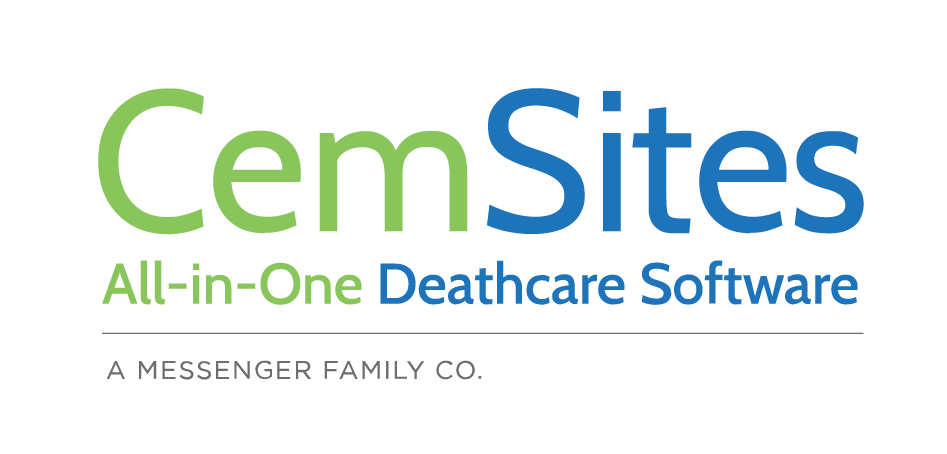By Scott McAfee.
Imagine the process of your day: waking up to an alarm on your smartphone, working at a computer at your desk, watching Netflix at night, etc. If you’re like most people, you use technology all day, every day, in one form or another. Technological advancements are practically inescapable, and they are constantly changing the way we do things. So, what does this mean for cemeteries? What does the modern cemetery look like, and how can technology influence day-to-day practices? To fully address where cemeteries are today in terms of technology and where they are going, we need to start at the very beginning.
A Brief History
Since ancient times, inhumation, or ground burial, has been practiced by the human species. Some of the first burials, carried out by Neanderthals, occurred during the Paleolithic period. While it is difficult to be certain, it is widely accepted that the first burial took place approximately 130,000 years ago.
A lot has changed in 130,000 years, but ground burial is still the most common choice in death-care worldwide. For many years, the go-to option for burial was the churchyard or a family graveyard. The large cemeteries we are accustomed to today were not established in the United States until 1638, when Myles Standish Burial Ground was established in Duxbury, Massachusetts. It is one of the oldest maintained cemeteries in the United States.
Despite the establishment of these early Colonial cemeteries, cemetery burial was still not the most popular option. There was still a notion at this time that church burial carried more prestige than cemetery burial. This idea began to change, however, during the Industrial Revolution, when rising populations and outbreaks of infectious disease caused these practices to be reconsidered for health and sanitation.
A turning point in cemetery history occurred with the establishment of Mount Auburn Cemetery in Cambridge, Massachusetts, in 1831. Mount Auburn was the first rural cemetery in the United States, and it started a wave of subsequent cemeteries modeled in its style. This type of cemetery is marked by its scenic, sprawling landscapes, which are expertly maintained. The beauty of this new type of cemetery shifted the stark view of death from the past to something new: a welcoming place to visit the dead while they rested.
Once cemeteries became the main choice in death care, it became critical to start paying attention to their organization and functionality. As you might imagine, cemeteries were run a lot differently in the past than they are now. For the majority of their history, cemeteries operated entirely on paper with hand-drawn maps and burial records kept in ledgers. These burial records were often of poor quality and missing important details. They were also difficult to read due to ink fading over time or poor penmanship. Another drawback to keeping things on paper was that the accuracy of the records was fully dependent on the person wielding the pen. This old-fashioned way of recordkeeping offered no protection from flood or fire damage, causing some records to be lost forever. Maps were on paper, too, opening them up to the same potential disasters and inaccuracies. Hand-drawn maps would often become faded and indecipherable with the wear of time, and they could not accurately be drawn to scale.
It wasn’t until the mid- to late 1980s, as computers became a staple to business management, that rudimentary computer systems were sometimes utilized. This included things like contact management systems, which were basically just digital Rolodexes. Unfortunately, in addition to being expensive, these systems were often clunky, making operations more difficult. At the time, there was resistance to change, as cemeteries were used to their tried-and-true way of doing things.
The Transition
Flash-forward to today. Present-day cemetery operations are in a largely transitional phase, navigating how to bridge the gap between the old, proven methods of the past and the bold innovations of the future. Accordingly, there are three distinct areas in which cemeteries fail in their use of technology:
1) Stuck in the Past
Some cemeteries refuse or feel unable to give up their old way of operating, overlooking the fact that these methods date back to before the 1900s. Despite operating in the modern world, they still have their records on paper and utilize the same, old, hand-drawn maps. While other types of businesses have been mostly off paper for decades, these cemeteries cling stubbornly to the past.
2) The Transition Process
A lot of cemeteries currently practice a hybrid type of workflow, with some practices still occurring on paper and others via computer. Some are in the process of transitioning to a computer operating system, only to realize the task is more daunting than originally expected. This is a somewhat precarious position to be in, as using two systems makes it more likely that something will get lost in the shuffle
3) Technology Takes Over
Operations are computerized from A to Z. Most, if not all, operations involved in running the cemetery are done via computer, from digital recordkeeping and finances to sales and GPS mapping. Unfortunately, most cemeteries fall into the first two categories, either still learning to implement technology, or not using it at all. While it may be possible to get by without technology, it’s going to get increasingly more difficult to avoid as new innovations continue to pop up every day. So, how do you flip the switch from either no technology or some technology to every daily process being done on a computer? While there are many different ways to introduce technology into your cemetery, the easiest thing to do is to find a single solution with everything you need rolled into one. This is where cemetery software comes in.
A Single Solution
The biggest game changer in the industry today, hands down, is cemetery management software. The quality of software available to cemeteries today is vastly different from the software available even as little as five years ago. This type of software can majorly upgrade how you run your cemetery. Ideally, you can find cemetery software that bundles everything you need into one simple solution. Look for software that addresses these areas:
• Customer Relationship Management
CRM is the framework for your cemetery software. This type of powerful system intuitively organizes your records and helps you easily manage customer data.
• Digitized Recordkeeping
Records can be added to the cemetery software system by scanning or manual entry, depending on the type of system you select. Once inputted, they are customizable, easy to update, and searchable.
• Accounting
The accounting portion of your cemetery software helps you keep track of financials and automatically generates contracts and estimates. It can export directly to other accounting software, such as QuickBooks.
• GPS Mapping
GPS mapping allows you to get to know your land and the true location of burials. This also benefits visitors, allowing them to find graves on their own using a smartphone. • Online Memorials Online memorials are an online space for friends and family to use as they choose. They can include anything the family would like, including an obituary, photos, or a guest book. Creating online memorials directly through your cemetery software allows you to keep everything branded to your specific cemetery.
• Auto-populating Website
Your cemetery software can also be seamlessly integrated into your website, allowing visitors to search online memorials, navigate to gravesites, and easily find any information pertaining to the cemetery.
Embracing the Change
While not every cemetery will adopt technology into their daily practices, one thing is for sure: cemetery technology is here to stay. It’s important to remember that technology is there to help you, and it can do a lot of the heavy lifting in terms of easing your daily burdens as a cemeterian. Start taking steps into the technological landscape now to discover the benefits technology can hold for you and your cemetery.
Click here to read the full story in the latest issue of American Cemetery and Cremation Magazine!



